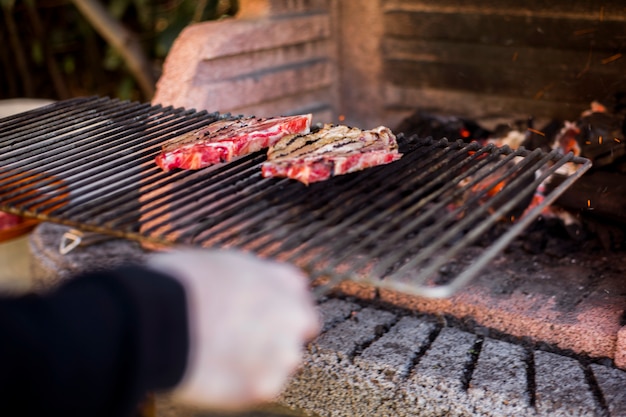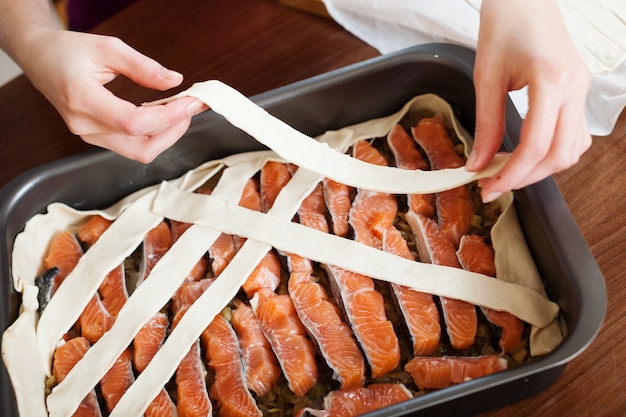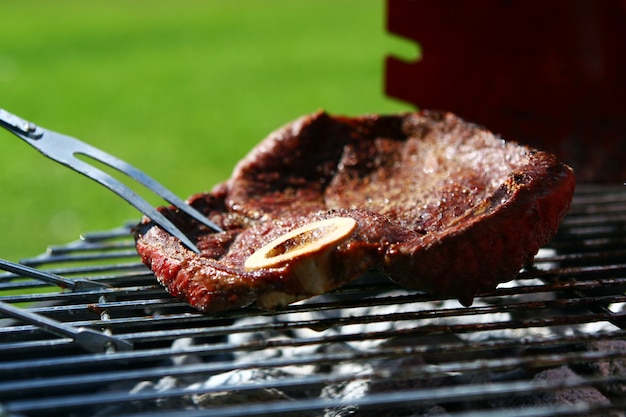Let’s be honest, there’s nothing quite like the aroma of smoked brisket filling the air on a sunny day. It’s a truly iconic barbecue dish, but it can also be a bit of a mystery. Getting that melt-in-your-mouth tenderness and smoky, deep flavour takes some patience and know-how.
I’ve been a barbecue enthusiast for years, and I’ve learned a thing or two about brisket, from both success and mistakes. I'm here to give you the lowdown on everything you need to know to grill a brisket that will impress your family and friends. We’ll cover everything from choosing the right cut to mastering the smoke and keeping things juicy, all while making sure it’s a manageable experience. So grab your apron, get ready to fire up the grill, and let’s get cooking!
(Part 1) Choosing the Perfect Cut

The first step is to find the right piece of meat. It's not as simple as grabbing the first brisket you see at the supermarket. You want to make sure you're starting with a cut that’s going to give you the best results, setting yourself up for success right from the start.
Types of Brisket
Brisket comes from the chest area of the cow, and it's a big, tough muscle. This is why we cook it low and slow. There are two main parts to a brisket:
- Point: This is the thicker, fattier part of the brisket. It's known for its rich, deep flavour and tenderness, but it can be a bit trickier to cook evenly. It's like the juicy, flavorful star of the show.
- Flat: This is the leaner, flatter part of the brisket. It’s easier to cook evenly but can be a little drier than the point. It’s the reliable friend you can always count on.
For the best results, you want a full packer brisket, which is the combination of the point and the flat. It gives you the best of both worlds: rich flavor and tenderness from the point, and even cooking from the flat. This is your complete brisket package, ready for barbecue greatness.
How to Choose the Right Brisket
Here’s what to look for when choosing your brisket:
- Marbling: Look for good marbling throughout the brisket. This fat will render down during cooking, keeping the meat juicy and tender. Think of it like a flavorful insurance policy against dryness.
- Colour: The brisket should be a bright, even red colour, with no signs of discoloration or bruising. This means it’s fresh and ready for grilling. If it looks pale or has unusual spots, it might be time to choose another cut.
- Weight: A good brisket will weigh between 10 and 15 pounds. Aim for a brisket that’s about 1 pound per person. This ensures you have enough for everyone and also makes it easier to manage during cooking.
If you can, find a local butcher who specializes in brisket. They'll be able to guide you towards the best cuts and offer valuable tips on how to cook it. They're the brisket whisperers, and they know a good piece when they see one!
(Part 2) Preparing the Brisket

Once you've got your chosen brisket, it's time to get it ready for the grill. This is where a little bit of prep goes a long way. It’s about creating a canvas for your flavor masterpiece.
Trimming the Brisket
The first step is to trim the brisket. This means removing any excess fat and tough, silver skin. These can make your brisket tougher and prevent the seasoning from penetrating properly. You can use a sharp knife or a pair of kitchen shears to trim.
Don’t go overboard with the trimming. You want to leave a good layer of fat on the brisket. This fat will melt down during cooking, keeping the meat juicy and tender. It’s like the secret ingredient to succulent brisket.
Seasoning the Brisket
With the trimming done, it’s time to get your hands dirty with seasoning. A simple dry rub is a great place to start, but you can get as fancy as you like! The key is to get the seasoning right into the meat, creating a flavorful crust during cooking. It's all about getting that rub to hug the brisket tightly.
Here’s my go-to dry rub recipe, a simple blend that packs a punch:
- 1 cup kosher salt
- 1/2 cup black pepper
- 1/4 cup paprika
- 1/4 cup garlic powder
- 1/4 cup onion powder
- 1 tablespoon brown sugar
- 1 tablespoon chili powder
Rub the dry rub all over the brisket, making sure to cover every inch. Then wrap it tightly in plastic wrap and refrigerate it for at least 4 hours, up to overnight. This allows the seasoning to penetrate the meat and creates a deep, flavorful base. It's like giving your brisket a good night's sleep in a flavorful cocoon.
(Part 3) The Grill Setup: Smoke and Fire

Now it’s time to fire up your smoker or grill! You’re aiming for a low and slow cook, which means creating a gentle, consistent heat that will slowly break down the tough muscle fibers in the brisket. Get those burners prepped, or get your wood ready to smoke.
Choosing Your Fuel
You’ve got some options when it comes to fuel. Here’s the breakdown:
- Wood: This is the classic choice for a smoky, authentic barbecue flavour. It’s the heart and soul of the traditional brisket experience. Popular wood choices for brisket include hickory, mesquite, and oak. Personally, I’m a big fan of pecan for its subtle sweetness, adding a touch of warmth to the flavor.
- Gas: If you’re using a gas grill, you’ll need a smoker box to get that smoky flavour. You can find these at most barbecue stores. Fill the smoker box with wood chips or pellets and place it on the grill. It’s a great way to bring the smoky taste to your gas grill.
No matter what fuel you choose, aim for a consistent temperature between 225 and 250 degrees Fahrenheit. You want a gentle, slow cook, not a blazing inferno. Think of it as creating a cozy, smoke-filled haven for your brisket.
Maintaining the Temperature
Once your smoker or grill is fired up, the next challenge is keeping a stable temperature. This is key to even cooking. You don’t want big swings in temperature, as it can dry out the brisket.
Use a meat thermometer to monitor the temperature inside your smoker or grill. If the temperature starts to drop, add more fuel. If it’s creeping up, adjust your vents. You’re aiming for that sweet spot, a consistently low and slow cook.
The key is to be patient and keep a close eye on the temperature. It’s better to err on the side of caution and keep the temperature a little low than to let it get too hot. Slow and steady wins the brisket race!
(Part 4) The Low and Slow Cook: Time for Patience
Here comes the real magic. This is the long, slow cook that transforms your brisket from a tough piece of meat into a tender, juicy masterpiece. It’s all about breaking down those tough fibers and letting the flavors meld.
The Initial Cook
Place the brisket on the grill fat-side up. This allows the fat to render down and keep the meat moist. The fat becomes your secret weapon against dryness. You want to cook the brisket for about 4 hours, or until it’s reached an internal temperature of 160 degrees Fahrenheit.
You’ll notice the brisket starting to release some juices. Don’t be alarmed, this is a good sign! It means the meat is starting to break down and become more tender. It’s like the brisket is saying, "I'm ready for the next step!"
The Wrap and Continue
After the initial cook, it's time to wrap the brisket. This helps to trap the moisture and keep the meat tender. I prefer butcher paper, but you can also use aluminum foil. It's like giving the brisket a warm, cozy hug.
Wrap the brisket tightly, making sure to seal all the edges. Then, return it to the grill and continue cooking for another 2-3 hours, or until it’s reached an internal temperature of 200 degrees Fahrenheit.
During this phase, the brisket will continue to break down and become even more tender. This is where you really see the transformation happen, from a tough piece of meat to a melt-in-your-mouth masterpiece.
(Part 5) The Rest: Time to Relax
Almost there! After the brisket is cooked to 200 degrees, it’s time to give it a rest. This is crucial for letting the meat reabsorb its juices and become even more tender. It’s the final step in achieving that perfect texture.
Remove the brisket from the grill and wrap it tightly in butcher paper or foil. Place it in a cooler or insulated container. Let the brisket rest for at least 2 hours, up to 4 hours.
While the brisket is resting, you can start prepping your sides. Cornbread, mac and cheese, baked beans… whatever your barbecue favorites are. This is the perfect time to get your kitchen humming with activity.
(Part 6) Slicing and Serving: The Grand Finale
The moment of truth is here! It’s time to slice your brisket and enjoy the fruits of your labor. This is where all your hard work pays off.
Slicing Technique
Use a sharp knife to slice the brisket against the grain. This will ensure the meat is tender and easy to eat. Think of it like cutting through threads, making it easy to enjoy each bite.
Here's how to slice your brisket:
- Point: Slice the point into thick slices, about 1/2 inch thick. It's the star of the show, so give it the room to shine.
- Flat: Slice the flat into thinner slices, about 1/4 inch thick. It’s leaner, so thinner slices help to distribute the flavor and create a lovely texture.
You can serve the brisket on its own, or you can add it to sandwiches, tacos, or other dishes. The possibilities are endless! Don’t forget the sauce. A good barbecue sauce will bring out all the flavors of the brisket, adding a layer of sweetness and tanginess that complements the smoky notes.
(Part 7) Tips and Tricks: Lessons Learned
Here are some tips and tricks I’ve learned over the years. Consider them the secret weapons for achieving brisket perfection:
Keep it Moist
The key to a good brisket is keeping it moist. You can do this by using a good cut of meat, trimming it properly, and keeping the temperature low and slow. You can also spritz the brisket with water or apple cider vinegar every hour or so to keep it from drying out.
Think of spritzing as giving your brisket a refreshing drink to keep it hydrated throughout the cooking process.
The texas crutch
Some pitmasters swear by the Texas Crutch. This technique involves wrapping the brisket in aluminum foil for the last part of the cook. It helps to trap the moisture and speed up the cooking process. It’s a handy trick for those who want to expedite the process while still achieving delicious results.
However, be sure to remove the foil for the last hour of cooking to let the bark caramelize. This creates a crispy, flavorful crust that adds another layer of texture and taste to your brisket.
Don't Overcook It
Brisket is known for its ability to withstand long cooking times, but it’s still possible to overcook it. If you cook it for too long, it can become dry and rubbery. Aim for an internal temperature of 200 degrees Fahrenheit and then let it rest. It’s better to undercook it a little bit than to overcook it.
Remember, the brisket will continue to cook even after it’s off the grill, so trust the process and be patient.
(Part 8) FAQs: Your Questions Answered
Got a burning question about brisket? I've got the answers!
1. What if my brisket isn't tender enough?
If your brisket isn't tender enough, you can try braising it. Wrap the brisket in foil and simmer it in a pot of liquid, such as beef broth or chicken broth, for several hours. This will help to break down the tough connective tissue and make the meat more tender. It’s like giving your brisket a luxurious spa treatment.
2. Can I use a gas grill for brisket?
Absolutely! You can use a gas grill to cook brisket. Just use a smoker box to add the smoky flavour. You'll need to monitor the temperature closely, as gas grills can be more difficult to control than smokers.
3. How long should I cook my brisket?
The cooking time for a brisket will vary depending on the size and thickness of the cut. But you can expect to cook a brisket for 8-12 hours. The key is to cook it slowly and evenly.
4. Can I freeze brisket?
Yes, you can freeze brisket. Wrap the brisket tightly in plastic wrap and then aluminum foil. Freeze it for up to 3 months. When you’re ready to cook it, thaw it in the refrigerator for 2-3 days.
5. What's the best way to reheat brisket?
The best way to reheat brisket is in a slow cooker or oven. Wrap the brisket in foil and heat it on low in the slow cooker for several hours, or in the oven at 250 degrees Fahrenheit until it’s warmed through. You can also add a little bit of liquid to the slow cooker or oven to keep the brisket moist.
Now, go out there and grill yourself some perfect brisket! And remember, patience is key, and don’t be afraid to experiment with different techniques and flavours.
Happy grilling!
Everyone is watching

How to Cook Frozen Lobster Tails Perfectly: A Step-by-Step Guide
RecipesLobster. Just the word conjures up images of lavish meals, special occasions, and a taste of luxury. But let's...

Pigs in a Blanket Cooking Time: How Long to Bake for Perfect Results
RecipesAh, pigs in a blanket. Just the name conjures up images of those delightful little parcels of crispy pastry en...

Pork Fillet Cooking Time: How Long to Cook It Perfectly
RecipesPork fillet, or tenderloin as it's sometimes called, is a real favourite in our house. It's so versatile, and...

The Ultimate Guide to Tender, Juicy Pulled Pork
RecipesRight, let's talk pulled pork. It's one of those dishes that just screams "comfort food," doesn't it? I mean...

The Ultimate Guide to Cooking Sweet Potatoes: From Roasting to Mashing
RecipesSweet potatoes. Just the name conjures up images of warm, comforting dishes, bursts of vibrant color, and a to...
